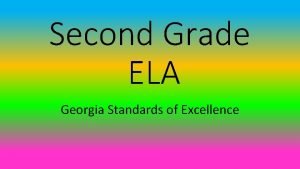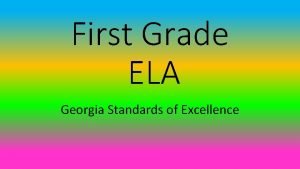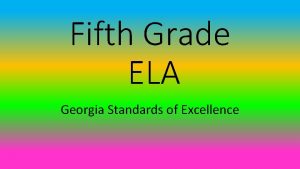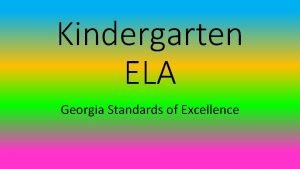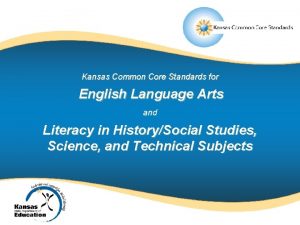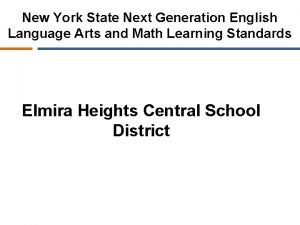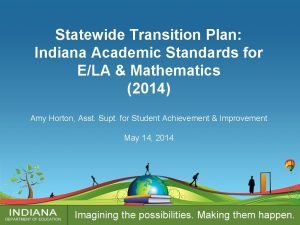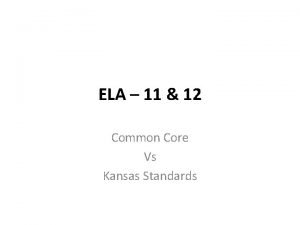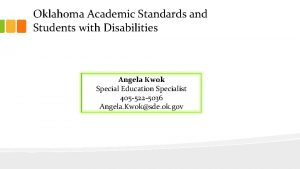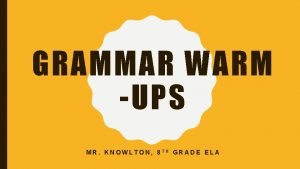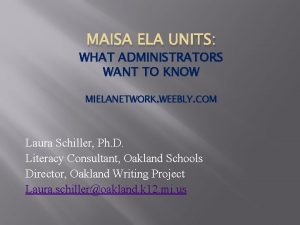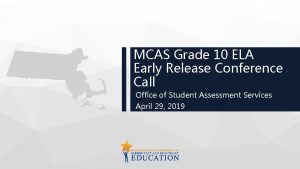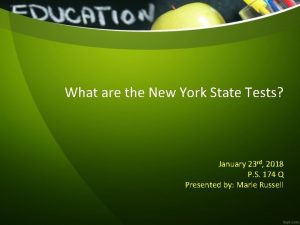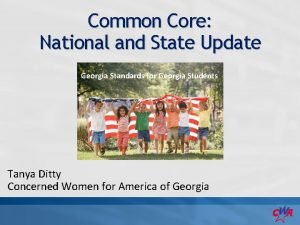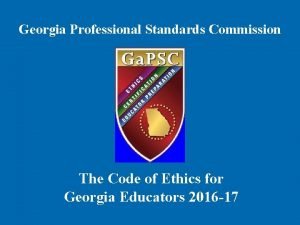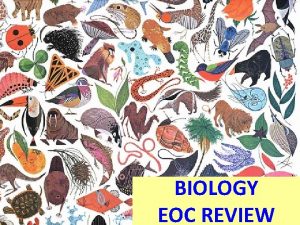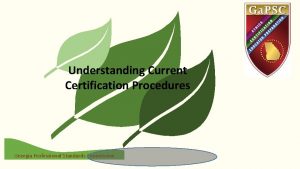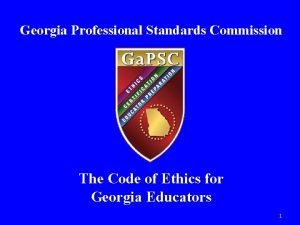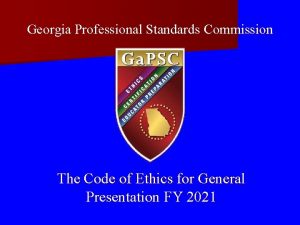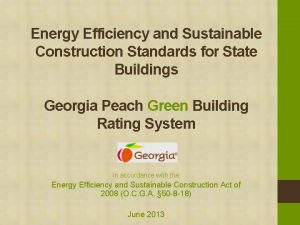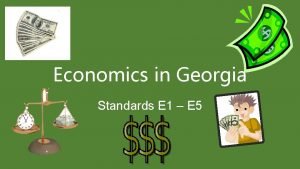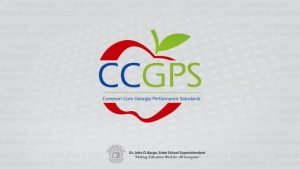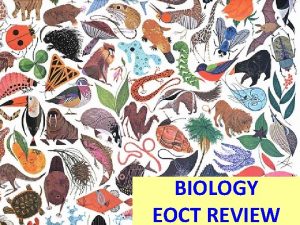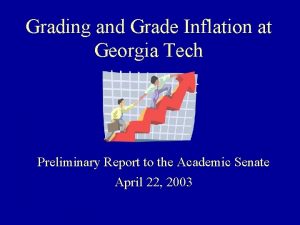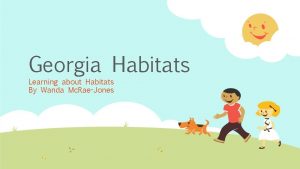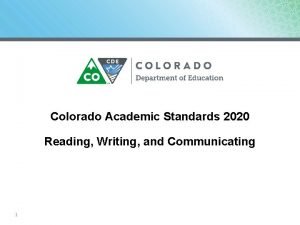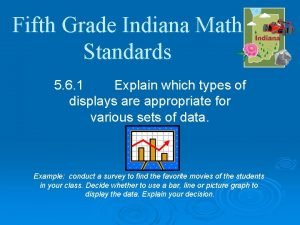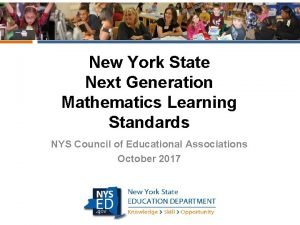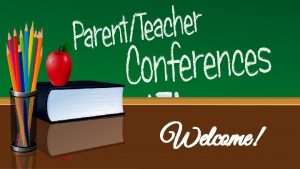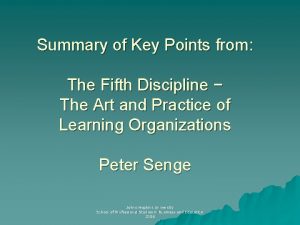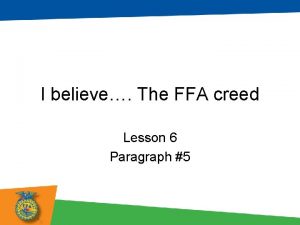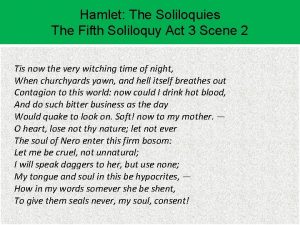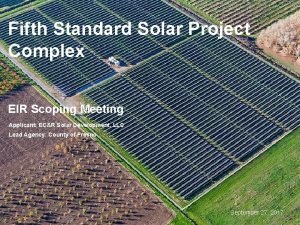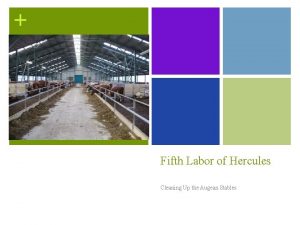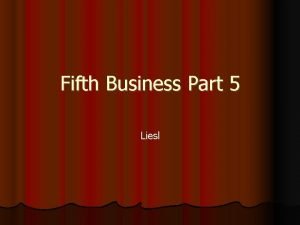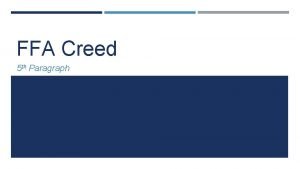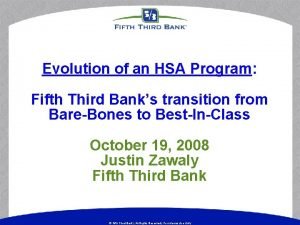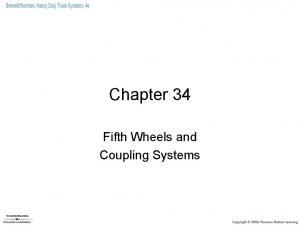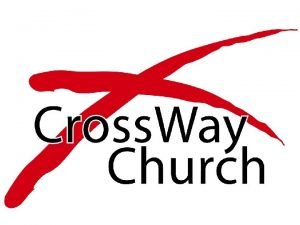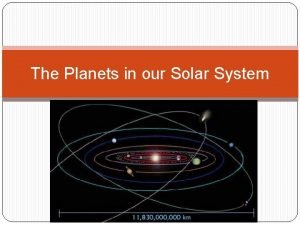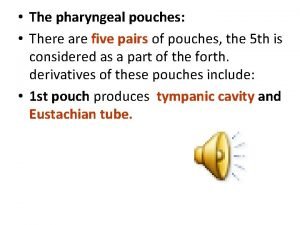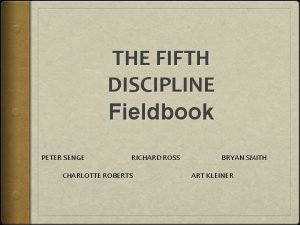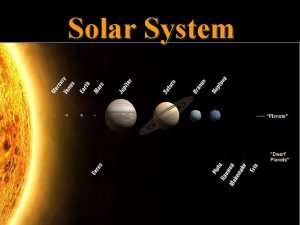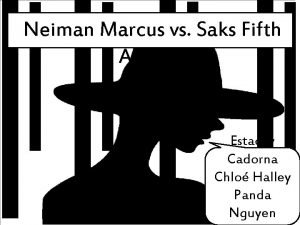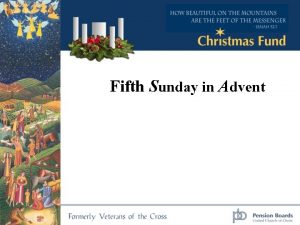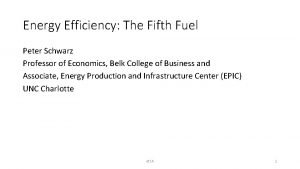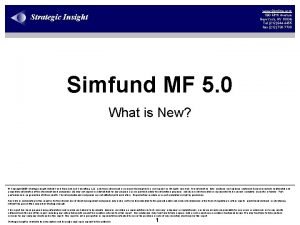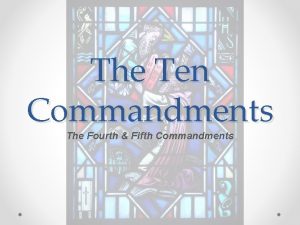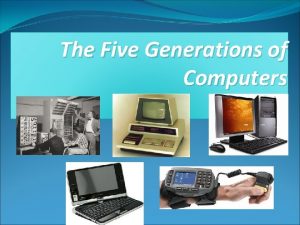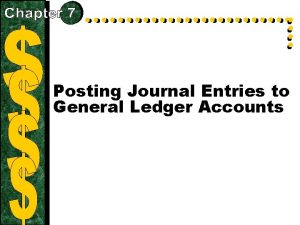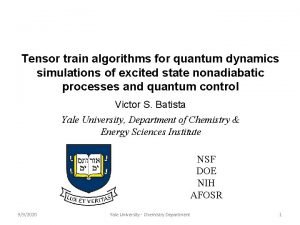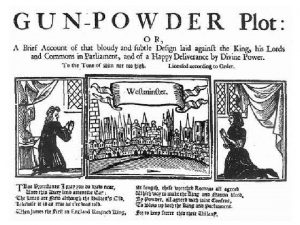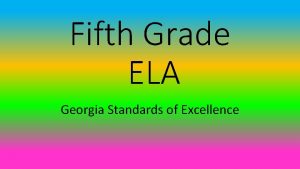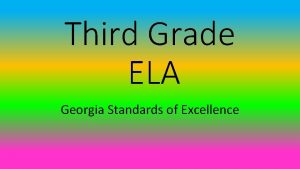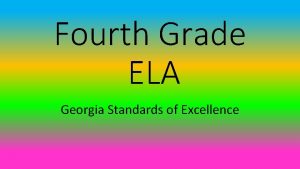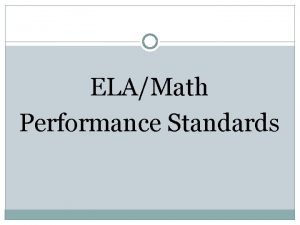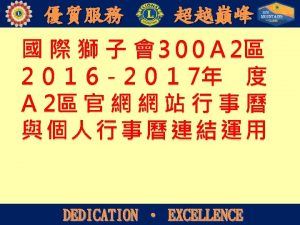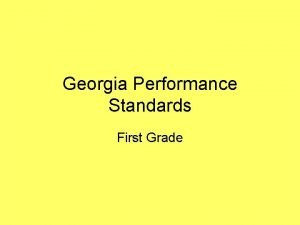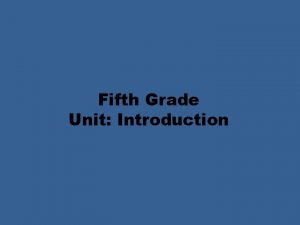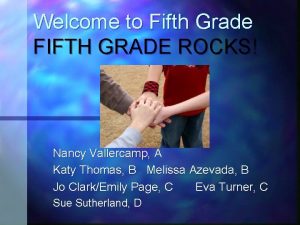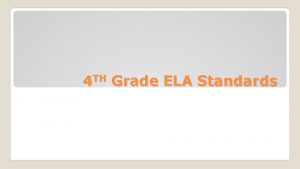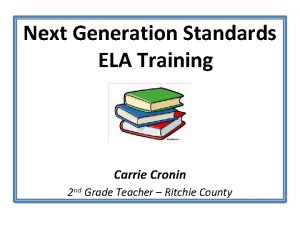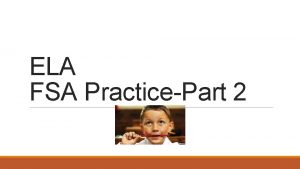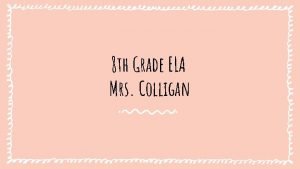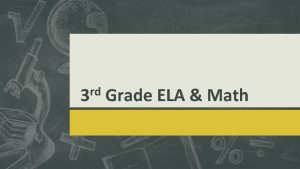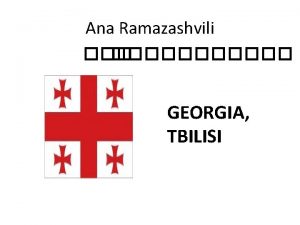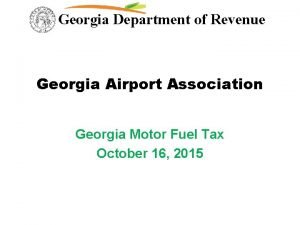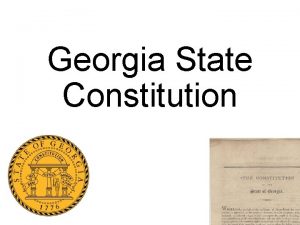Fifth Grade ELA Georgia Standards of Excellence Reading







































































- Slides: 71

Fifth Grade ELA Georgia Standards of Excellence

Reading Literary Key Ideas and Details

ELAGSE 5 RL 1 Quote accurately from a text when explaining what the text says explicitly and when drawing inferences from the text.

ELAGSE 5 RL 2 Determine a theme of a story, drama, or poem from details in the text, including how characters in a story or drama respond to challenges or how the speaker in a poem reflects upon a topic; summarize the text.

ELAGSE 5 RL 3 Compare and contrast two or more characters, settings, or events in a story or drama, drawing on specific details in the text (e. g. , how characters interact).

Reading Literary Craft and Structure

ELAGSE 5 RL 4 Determine the meaning of words and phrases as they are used in a text, including figurative language such as metaphors and similes.

ELAGSE 5 RL 5 Explain how a series of chapters, scenes, or stanzas fits together to provide the overall structure of a particular story, drama, or poem.

ELAGSE 5 RL 6 Describe how a narrator’s or speaker’s point of view influences how events are described.

Reading Literary Integration of Knowledge and Ideas

ELAGSE 5 RL 7 Analyze how visual and multimedia elements contribute to the meaning, tone, or beauty of a text (e. g. , graphic novel, multimedia presentation of fiction, folktale, myth, poem).

ELAGSE 5 RL 9 Compare and contrast stories in the same genre (e. g. , mysteries and adventure stories) on their approaches to similar themes and topics.

Reading Literary Range of Reading and Level of Text Complexity

ELAGSE 5 RL 10 By the end of the year, read and comprehend literature, including stories, dramas, and poetry, at the high end of the grades 4 -5 text complexity band independently and proficiently.

Reading Informational Key Ideas and Details

ELAGSE 5 RI 1 Quote accurately from a text when explaining what the text says explicitly and when drawing inferences from the text.

ELAGSE 5 RI 2 Determine two or more main ideas of a text and explain how they are supported by key details; summarize the text.

ELAGSE 5 RI 3 Explain the relationships or interactions between two or more individuals, events, ideas, or concepts in a historical, scientific, or technical text based on specific information in the text.

Reading Informational Craft and Structure

ELAGSE 5 RI 4 Determine the meaning of general academic and domain -specific words and phrases in a text relevant to a grade 5 topic or subject area.

ELAGSE 5 RI 5 Compare and contrast the overall structure (e. g. , chronology, comparison, cause/effect, problem/solution) of events, ideas, concepts, or information in two or more texts.

ELAGSE 5 RI 6 Analyze multiple accounts of the same event or topic, noting important similarities and differences in the point of view they represent.

Reading Informational Integration of Knowledge and Ideas

ELAGSE 5 RI 7 Draw on information from multiple print or digital sources, demonstrating the ability to locate an answer to a question quickly or to solve a problem efficiently.

ELAGSE 5 RI 8 Explain how an author uses reasons and evidence to support particular points in a text, identifying which reasons and evidence supports which point(s).

ELAGSE 5 RI 9 Integrate information from several texts on the same topic in order to write or speak about the subject knowledgeably.

Reading Informational Range of Reading and Level of Text Complexity

ELAGSE 5 RI 10 By the end of the year, read and comprehend informational texts, including history/social studies, science, and technical texts, at the high end of the grades 4 -5 text complexity band independently and proficiently.

Reading Foundation Phonics and Word Recognition

ELAGSE 5 RF 3 Know and apply grade-level phonics and word analysis skills in decoding words. a) Use combined knowledge of all lettersound correspondences, syllabication patterns, and morphology (e. g. , roots and affixes) to read accurately unfamiliar multi-syllabic words in context and out of context.

Reading Foundation Fluency

ELAGSE 5 RF 4 Read with sufficient accuracy and fluency to support comprehension. a) Read on-level text with purpose and understanding. b) Read on-level prose and poetry orally with accuracy, appropriate rate, and expression on successive readings. c) Use context to confirm or self-correct word recognition and understanding, rereading as necessary.

Writing Text Types and Purpose

ELAGSE 5 W 1 Write opinion pieces on topics or texts, supporting a point of view with reasons. a) Introduce a topic or text clearly, state an opinion, and create an organizational structure in which ideas are logically grouped to support the writer’s purpose. b) Provide logically ordered reasons that are supported by facts and details. c) Link opinion and reasons using words, phrases, and clauses (e. g. , consequently, specifically). d) Provide a concluding statement or section related to the opinion presented.

ELAGSE 5 W 2 Write informative/explanatory texts to examine a topic and convey ideas and information clearly. a) Introduce a topic clearly, provide a general observation and focus, and group related information logically; include formatting (e. g. , headings), illustrations, and multimedia when useful to aiding comprehension. b) Develop the topic with facts, definitions, concrete details, quotations, or other information and examples related to the topic. c) Link ideas within and across categories of information using words, phrases, and clauses (e. g. , in contrast, especially). d) Use precise language and domain-specific vocabulary to inform about or explain the topic. e) Provide a concluding statement or section related to the information or explanation presented.

ELAGSE 5 W 3 Write narratives to develop real or imagined experiences or events using effective technique, descriptive details, and clear event sequences. a) Orient the reader by establishing a situation and introducing a narrator and/or characters; organize an event sequence that unfolds naturally. b) Use narrative techniques, such as dialogue, description, and pacing, to develop experiences and events or show the responses of characters to situations. c) Use a variety of transitional words, phrases, and clauses to manage the sequence of events. d) Use concrete words and phrases and sensory details to convey experiences and events precisely. e) Provide a conclusion that follows from the narrated experiences or events.

Writing Production and Distribution of Writing

ELAGSE 5 W 4 Produce clear and coherent writing in which the development and organization are appropriate to task, purpose, and audience. (Gradespecific expectations for writing types are defined in Standards 1– 3 above. )

ELAGSE 5 W 5 With guidance and support from peers and adults, develop and strengthen writing as needed by planning, revising, and editing. (Editing for conventions should demonstrate command of Language Standards 1– 3 up to and including grade 5. )

ELAGSE 5 W 6 With some guidance and support from adults, use technology, including the Internet, to produce and publish writing as well as to interact and collaborate with others; demonstrate sufficient command of keyboarding skills to type a minimum of two pages in a single sitting.

Writing Research to Build and Present Knowledge

ELAGSE 5 W 7 Conduct short research projects that use several sources to build knowledge through investigation of different aspects of a topic.

ELAGSE 5 W 8 Recall relevant information from experiences or gather relevant information from print and digital sources; summarize or paraphrase information in notes and finished work, and provide a list of sources.

ELAGSE 5 W 9 Draw evidence from literary or informational texts to support analysis, reflection, and research. a) Apply grade 5 Reading Standards to literature (e. g. , “Compare and contrast two or more characters, settings, or events in a story or a drama, drawing on specific details in the text [e. g. , how characters interact]”). b) Apply grade 5 Reading Standards to informational texts (e. g. , Explain how an author uses reasons and evidence to support particular points in a text, identifying which reasons and evidence supports which point[s]).

Writing Range of Writing

ELAGSE 5 W 10 Write routinely over extended time frames (time for research, reflection, and revision) and shorter time frames (a single sitting or a day or two) for a range of discipline-specific tasks, purposes, and audiences.

Speaking and Listening Comprehension and Collaboration

ELAGSE 5 SL 1 Engage effectively in a range of collaborative discussions (one-onone, in groups, and teacher-led) with diverse partners on grade 5 topics and texts, building on others’ ideas and expressing their own clearly. a) Come to discussions prepared, having read or studied required material; explicitly draw on that preparation and other information known about the topic to explore ideas under discussion. b) Follow agreed-upon rules for discussions and carry out assigned roles. c) Pose and respond to specific questions by making comments that contribute to the discussion and elaborate on the remarks of others. d) Review the key ideas expressed and draw conclusions in light of information and knowledge gained from the discussions.

ELAGSE 5 SL 2 Summarize a written text read aloud or information presented in diverse media and formats, including visually, quantitatively, and orally.

ELAGSE 5 SL 3 Summarize the points a speaker makes and explain how each claim is supported by reasons and evidence.

Speaking and Listening Presentation of Knowledge and Ideas

ELAGSE 5 SL 4 Report on a topic or text or present an opinion, sequencing ideas logically and using appropriate facts and relevant, descriptive details to support main ideas or themes; speak clearly at an understandable pace.

ELAGSE 5 SL 5 Include multimedia components (e. g. , graphics, sound) and visual displays in presentations when appropriate to enhance the development of main ideas or themes.

ELAGSE 5 SL 6 Adapt speech to a variety of contexts and tasks, using formal English when appropriate to task and situation. (See grade 5 Language Standards 1 and 3 for specific expectations. )

Language Conventions of Standard English

ELAGSE 5 L 1 Demonstrate command of the conventions of Standard English grammar and usage when writing or speaking. a) Explain the function of conjunctions, prepositions, and interjections in general and their function in particular sentences.

ELAGSE 5 L 1 Demonstrate command of the conventions of Standard English grammar and usage when writing or speaking. b) Form and use the perfect (e. g. , I had walked; I have walked; I will have walked) verb aspects.

ELAGSE 5 L 1 Demonstrate command of the conventions of Standard English grammar and usage when writing or speaking. c) Use verb tense and aspect to convey various times, sequences, states, and conditions.

ELAGSE 5 L 1 Demonstrate command of the conventions of Standard English grammar and usage when writing or speaking. d) Recognize and correct inappropriate shifts in verb tense and aspect. *

ELAGSE 5 L 1 Demonstrate command of the conventions of Standard English grammar and usage when writing or speaking. e) Use correlative conjunctions (e. g. , either/or, neither/nor).

ELAGSE 5 L 2 Demonstrate command of the conventions of Standard English capitalization, punctuation, and spelling when writing. a) Use punctuation to separate items in a series. * b) Use a comma to separate an introductory element from the rest of the sentence. c) Use a comma to set off the words yes and no (e. g. , Yes, thank you), to set off a tag question from the rest of the sentence (e. g. , It’s true, isn’t it? ), and to indicate direct address (e. g. , Is that you, Steve? ). d) Use underlining, quotation marks, or italics to indicate titles of works. e) Spell grade-appropriate words correctly, consulting references as needed.

Language Knowledge of Language

ELAGSE 5 L 3 Use knowledge of language and its conventions when writing, speaking, reading, or listening. a) Expand, combine, and reduce sentences for meaning, reader/listener interest, and style. * b) Compare and contrast the varieties of English (e. g. , dialects, registers) used in stories, dramas, or poems.

Language Vocabulary Acquisition and Use

ELAGSE 5 L 4 Determine or clarify the meaning of unknown and multiple-meaning words and phrases based on grade 5 reading and content, choosing flexibly from a range of strategies. a) Use context (e. g. , cause/effect relationships and comparisons in text) as a clue to the meaning of a word or phrase.

ELAGSE 5 L 4 Determine or clarify the meaning of unknown and multiple-meaning words and phrases based on grade 5 reading and content, choosing flexibly from a range of strategies. b) Use common, grade-appropriate Greek and Latin affixes and roots as clues to the meaning of a word (e. g. , photograph, photosynthesis).

ELAGSE 5 L 4 Determine or clarify the meaning of unknown and multiple-meaning words and phrases based on grade 5 reading and content, choosing flexibly from a range of strategies. c) Consult reference materials (e. g. , dictionaries, glossaries, thesauruses), both print and digital, to find the pronunciation and determine or clarify the precise meaning of key words and phrases.

ELAGSE 5 L 5 Demonstrate understanding of figurative language, word relationships, and nuances in word meanings. a) Interpret figurative language, including similes and metaphors, in context.

ELAGSE 5 L 5 Demonstrate understanding of figurative language, word relationships, and nuances in word meanings. b) Recognize and explain the meaning of common idioms, adages, and proverbs.

ELAGSE 5 L 5 Demonstrate understanding of figurative language, word relationships, and nuances in word meanings. c) Use the relationship between particular words (e. g. , synonyms, antonyms, homographs) to better understand each of the words.

ELAGSE 5 L 6 Acquire and use accurately gradeappropriate general academic and domainspecific vocabulary, including words and phrases that signal contrast, addition, and other logical relationships (e. g. , however, although, nevertheless, similarly, moreover, in addition).
 2nd grade ela standards georgia
2nd grade ela standards georgia First grade reading standards georgia
First grade reading standards georgia Georgia kindergarten reading standards
Georgia kindergarten reading standards Georgia kindergarten ela standards
Georgia kindergarten ela standards While reading activities
While reading activities Ksde social studies standards
Ksde social studies standards Nys ela standards
Nys ela standards Indiana state standards ela
Indiana state standards ela Kansas ela standards
Kansas ela standards Oklahoma state standards ela
Oklahoma state standards ela Grammar warm ups middle school
Grammar warm ups middle school Maisa ela 8th grade
Maisa ela 8th grade Mcas ela grade 10
Mcas ela grade 10 Engageny ela grade 5 released questions
Engageny ela grade 5 released questions Georgia common core standards
Georgia common core standards Remunerative conduct examples
Remunerative conduct examples Biology eoc review georgia
Biology eoc review georgia Tpms program completion form
Tpms program completion form Teachers violating the code of ethics in georgia
Teachers violating the code of ethics in georgia Standard 10 georgia code of ethics
Standard 10 georgia code of ethics Georgia energy efficiency standards
Georgia energy efficiency standards Economics standards georgia
Economics standards georgia Ctae georgia standards
Ctae georgia standards Biology standards georgia
Biology standards georgia Grade inflation definition
Grade inflation definition Georgia habitats 3rd grade project
Georgia habitats 3rd grade project Customer service standards table
Customer service standards table Colorado reading standards 2020
Colorado reading standards 2020 Indiana math standards
Indiana math standards Next generation learning standards nys
Next generation learning standards nys Oklahoma state department of education math standards
Oklahoma state department of education math standards St. louis
St. louis Reading aims
Reading aims Types of reading skills
Types of reading skills Definition of guided reading
Definition of guided reading Critical reading is an active and reactive process.
Critical reading is an active and reactive process. Real definition of extensive reading
Real definition of extensive reading For adult
For adult How to develop reading skills in students
How to develop reading skills in students The fifth discipline summary
The fifth discipline summary First korotkoff sound
First korotkoff sound Fifth gear loop the loop
Fifth gear loop the loop Ffa cred
Ffa cred Hamlet soliloquy 5
Hamlet soliloquy 5 Fifth standard solar
Fifth standard solar The fifth labor involved cleaning the
The fifth labor involved cleaning the Liesl fifth business
Liesl fifth business 5th creed paragraph
5th creed paragraph 53 hsa
53 hsa Fifth wheel
Fifth wheel The fifth beatitude
The fifth beatitude Define arterial blood pressure
Define arterial blood pressure Whats the third planet from the sun
Whats the third planet from the sun Lateral lingual swellings
Lateral lingual swellings La quinta disciplina the fifth discipline fieldbook
La quinta disciplina the fifth discipline fieldbook Solar system vocabulary
Solar system vocabulary One two three first second third
One two three first second third Saks fifth avenue vs neiman marcus
Saks fifth avenue vs neiman marcus Fifth ward junior high school
Fifth ward junior high school Fifth sunday of advent
Fifth sunday of advent The fifth fuel
The fifth fuel Element scavenger hunt answers
Element scavenger hunt answers Sionline.com
Sionline.com 5th commandments of god
5th commandments of god What are the five generation of computer
What are the five generation of computer The fifth, sixth, seventh, and eighth amendments protect *
The fifth, sixth, seventh, and eighth amendments protect * Importance of ledger
Importance of ledger Principles of marketing fifth european edition
Principles of marketing fifth european edition 160 5th ave nyc
160 5th ave nyc Fifth element strain
Fifth element strain The fifth element
The fifth element Remember the 5th of november meaning
Remember the 5th of november meaning
